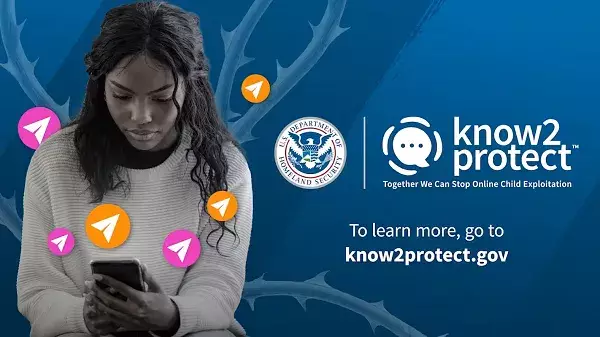In today’s digital age, the vulnerability of adolescents to child sexual exploitation and online abuse cannot be overstated. As platforms like Snapchat become integral parts of daily communication for millions of young people, the potential risks grow alongside their popularity. Recently, Snapchat has made noteworthy strides in its commitment to safeguarding its users, particularly through its participation in the U.S. Department of Homeland Security’s “Know2Protect” initiative. Launched in April 2022, this program focuses on raising public awareness about the dangers of online interactions, a mission that is both timely and essential.
Snapchat’s proactive involvement in Know2Protect emphasizes its recognition of the pressing need to address these issues. Users must not only understand the risks but also become equipped to navigate them safely. This approach encourages a culture of awareness and communication, making it a significant stride toward empowering the younger demographic in online spaces.
Critical Findings from Recent Research
Snapchat’s recent survey sheds light on the ongoing challenges faced by its youth users. Alarmingly, 24% of teens reported sharing intimate imagery, a statistic that hasn’t budged since the previous year. Meanwhile, 33% confessed to having been victims of online grooming—a slight decrease, yet still a harrowing number. Moreover, the phenomenon of catfishing deeply concerns young internet users, with 35% revealing they had been deceived by someone online.
These grim statistics underscore the complexity of the online landscape. One troubling finding revealed that over half (55%) of those who shared intimate images fell victim to deception regarding their partner’s identity. The psychological ramifications are profound, particularly for adolescents who rely heavily on digital communication to form connections. The staggering reality is that around 50% of those sharing intimate imagery felt they lost control over their content once it was released—a figure that skyrockets to 63% among teenagers. These numbers manifest a clear imperative for technology companies to enhance preventative measures and educational efforts surrounding online safety.
Fostering Awareness and Engagement
Despite the daunting statistics, there are promising signs that Snapchat’s initiatives may be starting to bear fruit. Insights from Snap’s research indicate a rising awareness of the Know2Protect campaign. An impressive 28% of respondents demonstrated familiarity with its elements, showcasing a remarkable 17-point leap since October of the previous year. Moreover, nearly 90% of aware users sought out additional information on online safety, reflecting a burgeoning interest in proactive measures among young individuals.
This progressive trend in user engagement is indicative of the potential impact that targeted awareness campaigns can have on online safety culture. By promoting resources and support systems, Snapchat is taking a vital step toward empowering its younger audience to recognize dangers and respond with informed decision-making.
Implementing Protective Technologies
In addition to fostering awareness, Snapchat has been systematically enhancing its safeguarding features. Noteworthy is the introduction of PhotoDNA, a technology powered by Google’s CSAI Match that detects and removes duplicates of known illegal images. Moreover, Snapchat has increased in-app warnings about suspicious friend requests, creating a more vigilant environment for its user base. Coupled with the development of its Family Center, which provides parental controls and resources, Snapchat is making remarkable strides toward a safer online ecosystem.
However, despite these advancements, the road ahead remains fraught due to the evolving nature of online threats, particularly with advancements in AI technology. The emergence of deepfakes and enhanced manipulation methods adds layers of complexity to the risks existing within digital platforms. Yet, the commitment demonstrated by Snapchat serves as a beacon of hope, emphasizing the necessity for continuous innovation and adaptation in security measures to align with the unique challenges posed by the digital landscape.
Through research, awareness initiatives, and the integration of new protective technologies, Snapchat is setting a precedent for how technology companies can confront child exploitation online. There’s no denying that substantial work remains—both within Snap’s infrastructure and in the broader scope of internet safety. However, their foundational steps toward fostering a culture of awareness and responsibility in digital interactions stand as a vital part of the conversation surrounding online safety for future generations.

